Pumpkin spice lattes, sweaters, and colorful autumn foliage make fall really fun in Maryland. But the fabulous fall colors on the leaves also remind us that just because summer may be coming to a close doesn’t mean we can ignore our yard. In fact, it’s quite the opposite.
As the landscape transforms into a breathtaking palette of fall colors, you must get ready to give your lawn TLC. With this fall lawn care checklist for Maryland, you can better prepare your yard for the changing seasons – harmonizing nature’s beauty with a vibrant and well-nurtured canvas.
In this article, we’ll cover:
- Why is Lawn Care Important in the Fall?
- Fall Lawn Care Checklist for Maryland
- FAQ for Fall Lawn Care in Maryland
Why is Lawn Care Important in the Fall?
Neglecting your lawn during this season risks dire consequences for your yard come spring. Contrary to popular belief, lawn care extends beyond the summer months. With cooler temperatures, fall provides the ideal environment for these essential practices:
- Revitalizing the soil by enhancing air and water circulation can help thwart diseases like snow mold.
- Infusing vital nutrients into the soil fosters robust root growth and bolsters resilience against disease and pests.
- Inhibiting weed seed germination in the fall helps safeguard your lawn from springtime invasion.
- Filling in bare patches can help cultivate a denser, more vibrant lawn that thrives in the seasons ahead.
- Cleaning your yard can eliminate potential havens for pests and disease-causing organisms, ensuring a pristine and healthy environment.
Unleash the transformative power of fall lawn care – preserving the beauty of your yard and setting the stage for a breathtaking spring.
Fall Lawn Care Checklist for Maryland
As the season winds down, don’t hang up your lawn care hat just yet. Fall is the best time for basic lawn maintenance that can help promote root development and good soil conditions. With the help of these fall lawn care tips, you can ensure your lawn will come back better than ever next spring.
1. Water as Needed
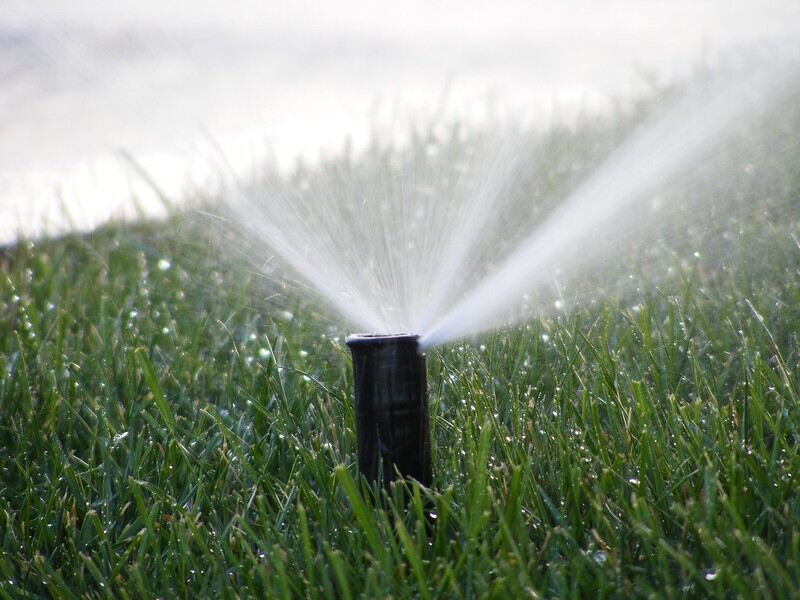
Photo Credit: Michael Mol / Flickr / CC BY 2.0
Now that summer has passed, you may be tempted to put away your sprinkler for the year, but it’s best to keep it out just a bit longer. Properly watering your lawn is essential for it to continue coming back each spring.
Keeping your lawn watered is especially important for late-season nitrogen applications to work properly. Otherwise, the fertilizer is less likely to enhance root growth if your grass is dry, rendering the fertilizer application useless.
An underwatered lawn will become brown and crunchy, and the dirt will become dusty as the grass stops growing. Nevertheless, be careful not to overwater, as this can cause weeds and fungal diseases. An overwatered lawn will quickly become luscious and green, then become limp and spongy before fading to brown and moss.
Tall fescue, the most common type of grass in Maryland, needs approximately 1 inch of water per week.
2. Rake Fallen Leaves
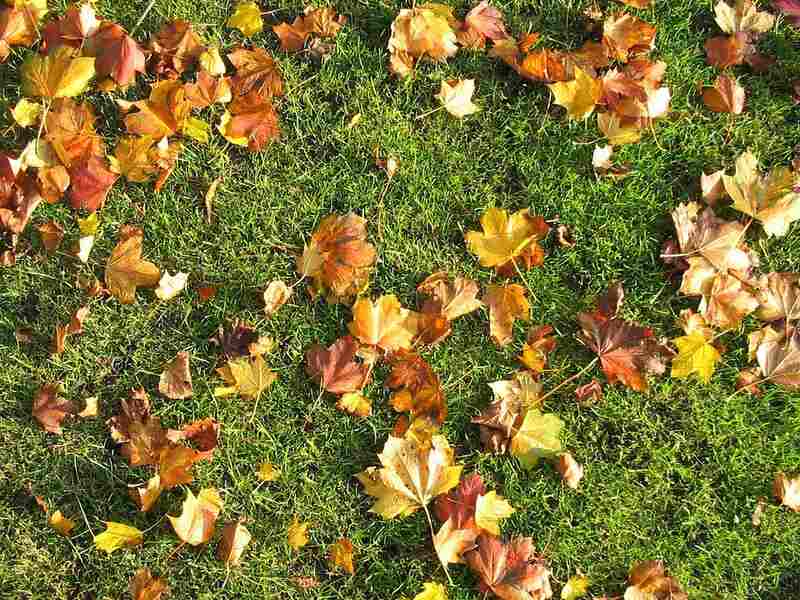
Photo Credit: PublicDomainPictures / Pixabay / License
Raking leaves can be one of the most exhausting and back-breaking fall chores, yet it’s necessary. And chances are, you may not be raking your leaves as often as you should.
Rake early, and rake often. Don’t wait until your trees are mostly or completely bare before you clear the leaves from your yard. You should rid your lawn of leaves as soon as possible. A rule of thumb is to rake your leaves one to two times a week once they start falling. If you do put it off, make sure your yard is clear of leaves before the first frost of the season.
Waiting to remove leaves from your lawn can cause them to suffocate the grass. Over time leaves will become wet from rain and morning dew – causing them to stick together and form a barrier.
This barrier filters out essential sunlight and water, preventing vital nutrients from reaching the roots. It also creates the perfect environment for weeds, rodents, insects, and diseases.
If you want to save yourself from the back pain of raking, especially if you have lots of trees or a large yard, you can use a lawnmower with a collection bag or vacuum system to clear the leaves.
3. Apply Fertilizer
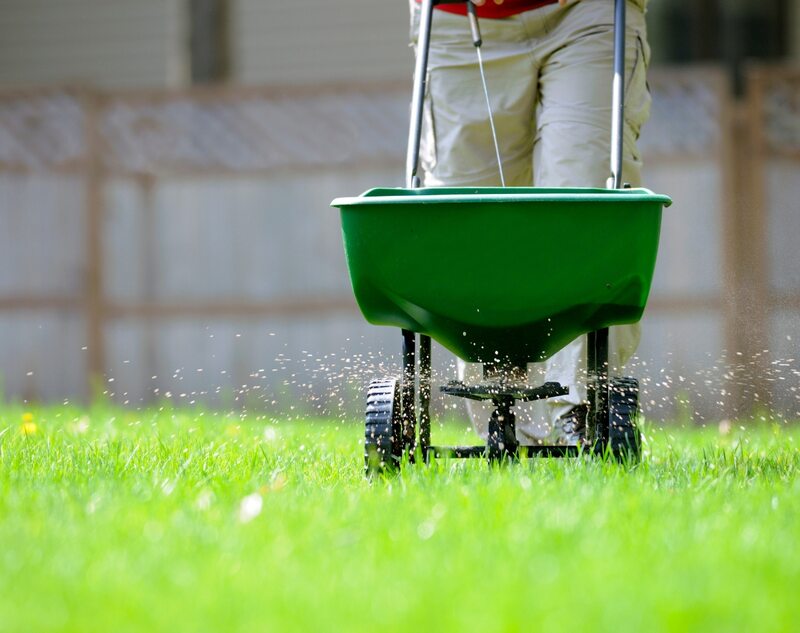
Photo Credit: groveb / Canva Pro / License
It’s a common misconception that it’s best to fertilize in the spring when it’s actually better to fertilize your lawn in the fall. During this season, grass recovers from the summer heat and drought while preparing for the upcoming winter months. But if you don’t fertilize in the fall, you should do it in the spring.
Fall fertilization advantages:
- Reduces weeds
- Boosts nutrients
- Prevents diseases
- Improves root growth
- Prevents bare patches
- Promotes greener grass
It’s recommended to apply fertilizer twice in the fall. The first round should be applied just after Labor Day, and the second should be when you mow the last time for the year.
Early fall fertilization increases turf density without promoting excess growth. On the other hand, late fall fertilization increases root growth and carbohydrate storage to help the grass survive winter and prepare for the spring’s new growth.
If you only fertilize once, then aim to fertilize in September. According to Maryland’s Lawn Fertilizer Law, fertilizer cannot be applied between Nov. 15 through March 1, so plan accordingly.
Types of fertilizer:
- Organic: This all-natural fertilizer is composed of manure or compost and will break down into the soil.
- Granular: Made from potassium nitrate and ammonium sulfate, granular fertilizer comes in a pellet form. It’s typically cheaper than organic fertilizers and will continually release nutrients for one to three months.
- Water soluble: Typically ammonium-based, water-soluble fertilizers will absorb quickly into your lawn.
4. Control and Eliminate Weeds
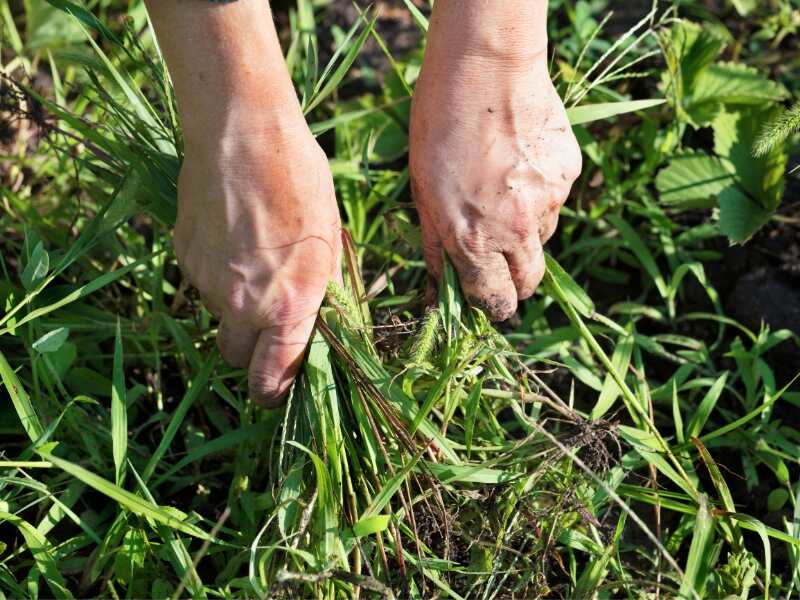
Photo Credit: Sergii Petruk / Canva Pro / License
Weeds. They seem to be an ever-present annoyance. Whether you are currently fighting a weed infestation or are looking to prevent weeds, fall is the time to treat them.
There are two types of treatment:
- Pre-emergent places an invisible barrier on your grass to prevent weeds.
- Post-emergent should be used as soon as you see the first signs of weeds emerging. These products help to eliminate weeds already growing in your yard.
Weeds can invade even the healthiest and luscious of lawns. If left untreated, weeds will consume the valuable nutrients intended for your grass – causing your lawn to look dull and drab. These results happen because your grass will be robbed of essential water, clean air, and direct sunlight. Your grass will become weak and susceptible to disease and insect infestations.
5. Aerate Your Lawn
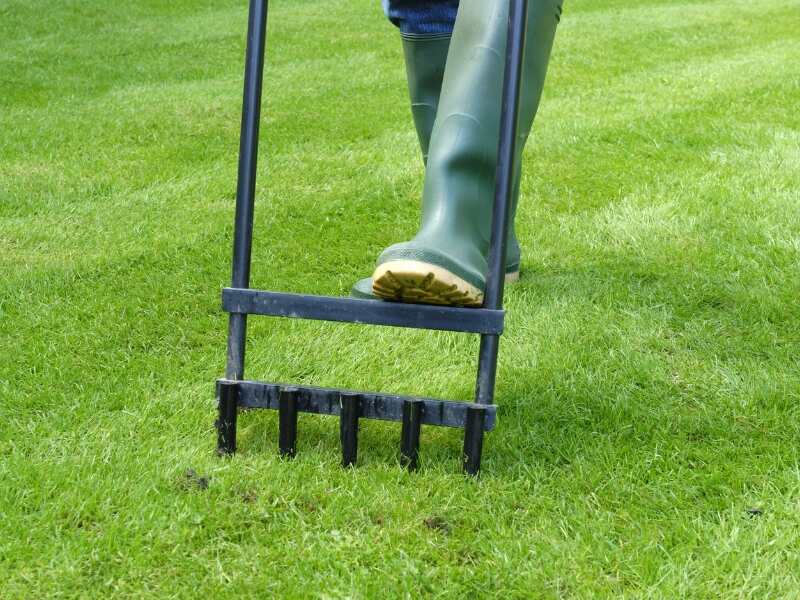
Photo Credit: Jeffoto / Canva Pro / License
As you prepare your grass for the upcoming winter weather, it’s also the best time to aerate your lawn. It will help:
- Relieve soil compaction
- Increase air circulation
- Allow new seed growth
- Boost fertilizer absorption
Aeration also energizes your lawn’s root system to expand before winter, which will help it survive the harsh winter months and return healthy and vibrant in the spring.
Types of aeration:
- Spike: Small holes are poked into the ground using spikes, which compact the soil.
- Core: Dirt is pulled upward to create tiny holes in the lawn. This prevents the soil from compacting, which can inhibit roots from growing.
- Liquid: A liquid solution is used to break down compacted soil to allow for airflow to help retain moisture.
Pro Tip: It’s usually best to hire a professional to aerate your lawn. This takes time and the proper equipment to do it right.
6. Overseed for a Dense Lawn
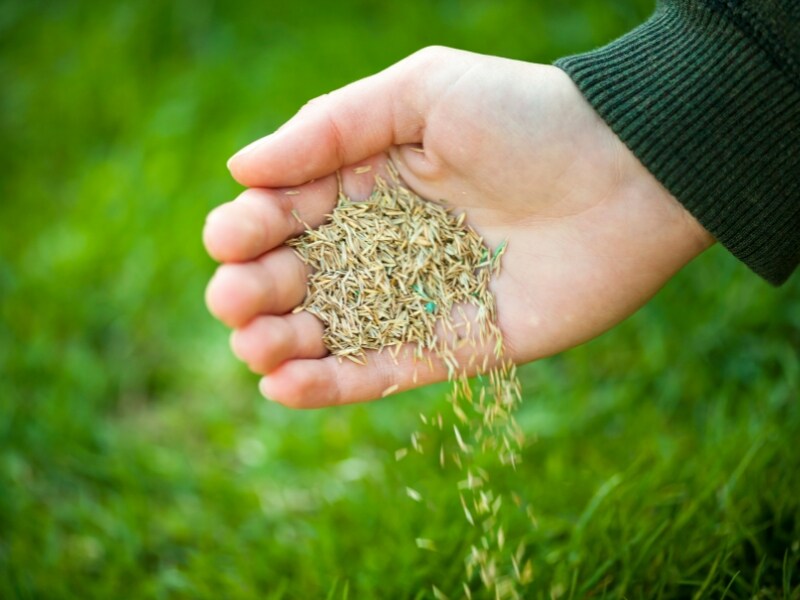
Photo Credit: Elena Photo / Canva Pro / License
As the seasons transition, you can seize the opportunity to overseed your lawn. Amidst the autumnal landscape, when weeds retreat, dispersing grass seeds over your established lawn will yield better results. Doing this helps fill in bare areas and thicken up the lawn to provide a more dense and fluffy appearance.
But don’t forget to water – it’s an essential part of the seeding process. A newly seeded lawn needs to be watered lightly every day. You don’t want your seeds to dry out, or they won’t germinate.
It’s best to overseed between mid-August to mid-September. Be sure to plant at least 45 days before the first frost, and don’t seed past Oct. 15. This will give your seed time to get established after the heat of the summer but before it goes dormant for the winter.
7. Mow Your Lawn
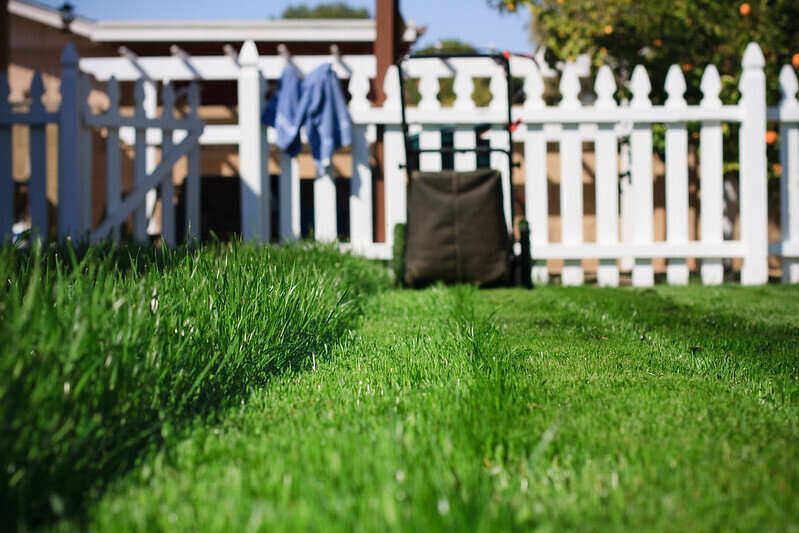
Photo Credit: sean hobson / Flickr / CC BY 2.0
Just because the calendar hit September doesn’t mean it’s time to store the lawn mower for the season. You want to continue mowing your lawn throughout the fall. It’s best to slowly taper your grass down rather than mowing it short once.
Also, maintain proper grass heights. Cutting grass too short may cause its root system to freeze. On the other hand, letting your grass grow too long can cause it to become matted and diseased. For example, tall fescue should be kept about 2.5 inches.
When in doubt, follow the one-third rule: Cut one-third of your grass’s length. You never want to cut more because it can make it susceptible to weeds, pests, and disease.
| Grass Type | Recommended Mowing Height |
| Fine fescue | 3 – 4 inches |
| Kentucky bluegrass | 2 – 3 inches |
| Perennial ryegrass | 2 – 3 inches |
| Tall fescue | 2 – 4 inches |
| Bermudagrass | 1 – 2 inches |
| St. Augustinegrass | 2.5 – 4 inches |
| Zoysiagrass | 1 – 2.5 inches |
8. Winterize Your Sprinkler System
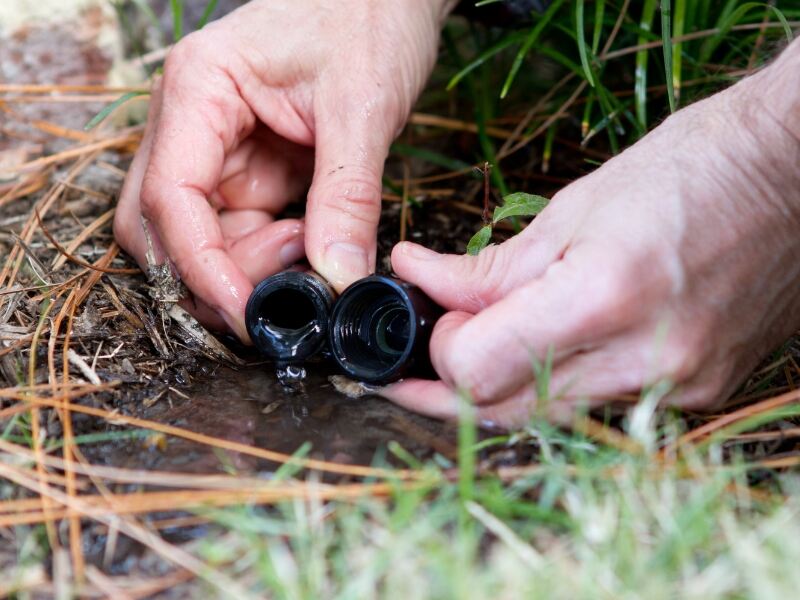
Photo Credit: SLRadcliffe / Canva Pro / License
One last task before you can call it quits for the season is winterizing your sprinkler system. Any water remaining in your pipes over the winter can lead to frozen pipes, broken sprinkler heads, and cracked plastic. So, completely drain all water from your irrigation system. Come springtime, and you’ll be glad you did.
FAQ About Fall Lawn Care in Maryland
Since Maryland is in a transition zone, both cool and warm-season grasses can grow here. But with its hot summers and cold winters, you need to select grass species that can withstand both extremes. Moreover, different regions in the Old Line State have varying soil compositions, such as clay-heavy or sandy soil, which can impact drainage and root growth.
Plus, irregular rain patterns require careful water management to avoid drought stress or excessive moisture. The state’s diverse ecosystem contributes to pest and disease pressure, necessitating proactive lawn maintenance and pest management strategies. Additionally, coastal areas may face higher humidity levels and salt spray challenges.
Yes, absolutely. There are numerous ways to create a low-maintenance landscape, and one of the best ways is to replace all or just a part of your lawn with a grass alternative. Planting grass alternatives will help eliminate the need for regular mowing, cutting down the time needed for landscape maintenance.
Grass alternatives:
● Garden beds or borders
● Groundcovers
● Moss
● Mulches
● No-mow/natural areas
● Ornamental grasses
● Trees
Yes. Knowing your soil’s pH is the best way to know what amendments might be needed to your soil and what kind of fertilizer to use on your lawn.
Test your soil with a DIY kit. You can buy these kits from your local garden center or home improvement store. Or contact your local extension office for professional testing. Test sooner rather than later to prevent problems down the road.
Maryland soil sometimes lacks proper amounts of boron, zinc, and manganese. The results of your soil test will show whether you need to add a few elements to balance your soil’s pH for optimal growth.
Why is it hard to grow a lawn in Maryland?
Since Maryland is in a transition zone, both cool and warm-season grasses can grow here. But with its hot summers and cold winters, you need to select grass species that can withstand both extremes. Moreover, different regions in the Old Line State have varying soil compositions, such as clay-heavy or sandy soil, which can impact drainage and root growth.
Plus, irregular rain patterns require careful water management to avoid drought stress or excessive moisture. The state’s diverse ecosystem contributes to pest and disease pressure, necessitating proactive lawn maintenance and pest management strategies. Additionally, coastal areas may face higher humidity levels and salt spray challenges.
Are there ways to have low-maintenance landscaping in Maryland?
Yes, absolutely. There are numerous ways to create a low-maintenance landscape, and one of the best ways is to replace all or just a part of your lawn with a grass alternative. Planting grass alternatives will help eliminate the need for regular mowing, cutting down the time needed for landscape maintenance.
Grass alternatives:
- Garden beds or borders
- Ground covers
- Moss
- Mulches
- No-mow/natural areas
- Ornamental grasses
- Trees
Should I do a soil test?
Yes. Knowing your soil’s pH is the best way to know what amendments might be needed to your soil and what kind of fertilizer to use on your lawn.
Test your soil with a DIY kit. You can buy these kits from your local garden center or home improvement store. Or contact your local extension office for professional testing. Test sooner rather than later to prevent problems down the road.
Maryland soil sometimes lacks proper amounts of boron, zinc, and manganese. The results of your soil test will show whether you need to add a few elements to balance your soil’s pH for optimal growth.
Fall Lawn Care For The Win
Elevate your yard’s potential by preparing it for the coming winter, ensuring a triumphant return next spring — vibrant, robust, and more breathtaking than ever.
Whether you live in Baltimore, Frederick, Ocean City, Annapolis, or any of Maryland’s amazing towns, let us help you find a lawn care pro near you to help transform your lawn into a masterpiece that will leave your neighbors in awe.
Main Photo Credit: DenisTangneyJr / Canva Pro / License

